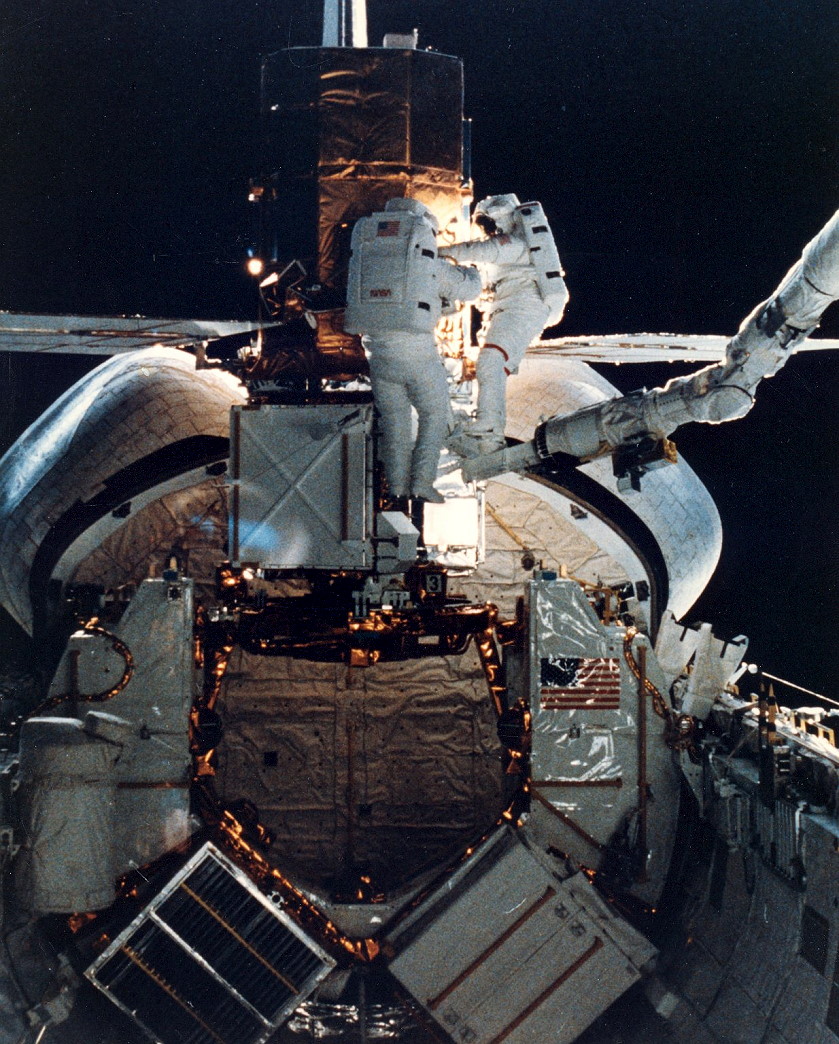
Thirty years ago this week, the shuttle launched on arguably its most ambitious mission to date: a mission which would demonstrate the reusable orbiter’s capabilities of rendezvous, retrieval, satellite repair, and spacewalking with the Manned Maneuvering Unit (MMU) “jet backpack” in spectacular fashion and enhance NASA’s confidence in anticipation of future flights to service the Hubble Space Telescope (HST). Originally designated “STS-13,” and later redesignated “STS-41C,” the reader would be forgiven for thinking that the mission might have been dogged with ill-fortune. In fact, for the five-man crew, the question of good or bad luck even factored into their impromptu mission patch. On Mission 41C in April 1984, the astronauts salvaged NASA’s crippled Solar Maximum Mission (SMM) spacecraft—nicknamed “Solar Max”—and after initial difficulties repaired and rejuvenated it during two magnificent EVAs.
Perhaps by design or circumstance, the scheduled launch date for the “unlucky” mission had moved from Friday, 13 April 1984, (according to NASA’s November 1982 shuttle manifest) to Wednesday, 4 April, by the end of 1983. Eventually, Challenger launched on 41C on Friday the 6th. The absurdity of NASA’s efforts to avoid misfortune befalling the flight had already led to the introduction of a bizarre, 13-free numbering system, in which missions would be designated with a series of letters and digits. Although 41C was originally STS-13 in the sequence, the cancellation of two other missions meant that it actually became the 11th flight in shuttle program history. The issue of bad luck was taken a stage further by the mission’s pilot, Dick Scobee, who designed an unofficial crew patch with a menacing black cat, emblazoned with the numeral “13,” surrounded by lightning bolts and a shuttle hurtling into space from beneath its diabolical belly. Scobee’s crewmate, Terry Hart, later admitted that the astronauts had coffee mugs made with the “official” 41C patch on one side … and the “unofficial” one on the other.
When the crew was announced by NASA in February 1983, one of them was unavailable to begin direct training until later that year. Commander Bob Crippen was preparing to lead STS-7 in June 1983 and his stint on the Solar Max repair would make him the first person to fly the reusable spacecraft three times. He would be joined by pilot Scobee and mission specialists Hart, James “Ox” van Hoften, and George “Pinky” Nelson.
In contrast to several other shuttle crews, whose payloads were being endlessly juggled, the two main objectives of 41C—repairing Solar Max and deploying a huge, bus-sized satellite called the Long Duration Exposure Facility (LDEF)—had remained static ever since the flight was approved by NASA Headquarters in August 1982. “Our mission was so specialized,” explained Crippen in a NASA oral history interview, “that when we were going up to get Solar Max … it was not reasonable that we could change it.” LDEF, too, was so large that it would have been difficult to remove it from the manifest and put it onto another flight. In fact, the satisfactory performance of the Canadian-built Remote Manipulator System (RMS) mechanical arm was critical, not just for the Solar Max repairs, but also for the deployment of LDEF.
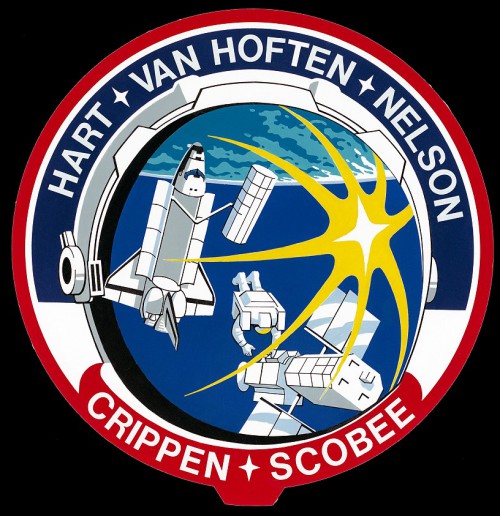
The satellite took the form of a 12-sided structure, and, as its name implied, it was designed to house experiments which required long-term exposure to the hostile environment of low-Earth orbit. No one could possibly have foreseen, at the time of LDEF’s launch, exactly how long it would remain in space before being retrieved by another shuttle mission and returned to Earth. NASA intended to collect the satellite during Mission 51D in February 1985, but that was repeatedly delayed, and by the time Challenger exploded the retrieval had been rescheduled for Mission 61I in September 1986. In fact, it would not be recovered until January 1990, by which point it was only weeks away from an uncontrolled and fiery re-entry. It was a peculiar object, measuring 29.8 feet (9.1 meters) long by 13.8 feet (4.2 meters) wide and weighing 20,990 pounds (9,520 kg). At its most basic, it consisted of an intricate frame of aluminum rings and longerons, loaded with trays for 57 experiments, whose disciplines ranged from materials and structures to power and propulsion and from science and technology to electronics and optics.
Deployment of LDEF occurred 24 hours into Mission 41C, on 7 April 1984, and, although Terry Hart admitted “that was exciting,” it hardly compared with his first and only shuttle launch a day earlier. “It was a clear, cool morning,” he said of Friday the 6th, “and we went through the traditions of having breakfast together and there was always a cake there for the crew before they went out. Next, we went out to the launch pad and up the elevator. As usual, people don’t say much in elevators—whether you’re in a hotel or on the launch pad—and you watch the numbers tick by and, instead of floors, they do everything in feet in the launch pad elevators. When you walk across the gantry to board the shuttle, you can look down into the flame trench. The obvious thing that’s striking you is that this is for real: we’re going to go! Everything was pretty smooth on our launch countdown. We got strapped in and, again, the guys strapping us in were a lot of the same guys that strapped in Al Shepard on his Mercury flight [in May 1961].”
By the time of launch, the 41C crew had spent 14 months together as a team and all five men would agree that this mission was the mission that everyone wanted. With a background as a pilot in the Air Force Reserve and master’s degrees in mechanical and electrical engineering, Hart had spent his first few years as an astronaut working on new rendezvous procedures. Although rendezvous had been accomplished during the Gemini and Apollo programs, bringing the orbiter alongside Solar Max for repairs was quite different. “The shuttle was this big truck,” he told the NASA oral historian, “and it had a very limited amount of fuel on board, whereas the Apollo command module and Gemini were like sports cars. They could just zip around and change orbits much more readily, especially in close, around an object, they could just kind of move right around with great ease. If we started to do much of that, we’d very quickly run out of fuel and have to de-orbit, so we had to come up with new design trajectories and procedures to accommodate that difference to ensure that we were flying the most fuel-optimal approach during a rendezvous.”
When he was assigned to 41C, Hart’s initial suspicion was that he would be involved in the rendezvous, and not the EVAs, but the word on the astronaut office grapevine was that James van Hoften (nicknamed “Ox,” due to his physical height and size) was too big to perform a spacewalk. Nevertheless, one day Bob Crippen approached Hart and told him that his expertise was needed to perform the RMS work and the rendezvous. The EVAs would be done by van Hoften and Nelson.
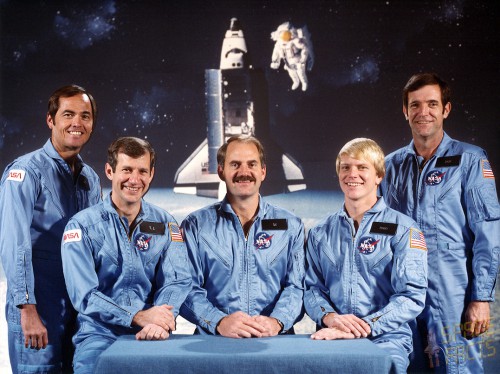
Throughout 1983 and into the spring of 1984, Hart’s attention was entirely devoted to preparing for the intricate RMS operations in support of the Solar Max repair and the LDEF deployment. “The arm engineers wanted to make sure we properly tested the arm moving such a large object,” he explained, “so they could understand that it was going to be able to do what it was designed to do, so I spent a lot of time working with the engineers to make sure that I was doing everything that they wanted done during testing.” Much of the simulation work was done at the Johnson Space Center (JSC) in Houston, Texas, and at RMS prime contractor Spar Aerospace’s facility in Toronto, Canada, and Hart found himself routinely testing the flex of the arm with the huge LDEF attached and capturing Solar Max in a rotating mode.
One of Hart’s responsibilities during Challenger’s ascent to orbit was to act as a “second flight engineer”; seated behind Dick Scobee, he assisted van Hoften with checking off the milestones and monitoring the procedures needed in the event of problems. There were none. “Off we went,” he said of the 8:58 a.m. EDT liftoff, “right on time on a perfectly clear day. I had a couple of surprises: the shake, rattle and roll of the Solid Rocket Boosters for the first two minutes is a very low-frequency rumble; just a tremendous sense of power. You can look back over your shoulder or look out the top window when you’re in the flight deck and watch the world disappearing behind you. Very quickly, the SRBs taper off and separate and that was the surprise I had, because your G-loading builds up close to 2.5 G as the boosters reach their peak thrust. As the solid rockets burn off and separate, the sensation that you have at that point I wasn’t quite prepared for, because you go from 2.5 G back to about one and a half. The sensation you have is that you’re losing out, that you’re falling back into the water! You don’t think you’re accelerating as much as you should be to get going and, of course, I’d worked on the main engine program anyway, so I was very familiar with what the engines could do or not do. I think in the next minute I must have checked the main engines to make sure they were running, because I’d swear we only had two working: it just didn’t feel like we had enough thrust to make it to orbit! Then, gradually, the External Tank gets lighter and as it does, of course, with the same thrust on the engines, you begin to accelerate faster and faster. After a couple of minutes, I felt like, yes, I guess they’re all working.”
Indeed, Challenger’s fifth launch had proceeded without incident. The External Tank behaved superbly and the performance of the main engines, read NASA’s post-mission report, “appeared to be normal.” The only deviation was when the engines throttled down to 67 percent, rather than the predicted 71 percent, as Challenger passed through maximum aerodynamic pressure (known as “Max Q”), a minute into the flight; this lower level was later attributed to a higher than anticipated SRB impulse during the first 20 seconds. Chase aircraft also revealed that one of the main parachutes on the right hand booster failed to inflate, although both boosters were recovered successfully.
Experiencing the launch from a somewhat different perspective, seated on Challenger’s darkened middeck, next to the side hatch, George “Pinky” Nelson did not have the luxury of viewing the ascent through the wrap-around windows of the cockpit as Crippen, Scobee, Hart, and van Hoften could. Still, he recalled the rapidity of his first ride into orbit. He was also able to peer through a tiny circular window in the side hatch and capture a fleeting glimpse of the enormous, controlled explosion that was underway outside. “I could see the tower go by and the sky and horizon as we ascended,” he told this author in an email correspondence from March 2006. “It was a bit lonely down there, but Crip kept a running commentary on how the launch was going, since we were all rookies, but him. That helped keeping up with the events. My first experience with weightlessness was problematic. I’d had many flights on the KC-135 aircraft and hundreds of hours in the water tank, so was familiar with the sensations of weightlessness. I remember how pleasant a sensation it was and how surprised I was that I didn’t get sick!”
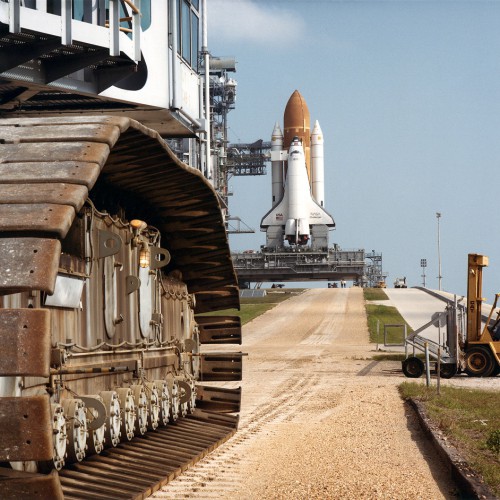
On his first voyage into space, Nelson adapted well to the new environment. Unfortunately, the same could not be said for Terry Hart. Mission 41C marked the shuttle’s first “direct insertion” ascent. In other words, only one Orbital Maneuvering System (OMS) engine firing—rather than two—was needed to circularize Challenger’s orbit at an altitude of around 330 miles (530 km). Previously, when less performance data was available for the main engines and some targeting precision was lacking, an initial OMS burn was made to raise the apogee, followed by another, half an orbit later, to raise the perigee and circularize the orbit. On 41C, however, the ascent was to achieve an initial orbit with an apogee at the desired altitude without performing the OMS-1 burn, and the OMS-2 burn provided circularization. This enabled the engines to provide more energy and permit the easier use of on-board software.
The high orbit was needed for the rendezvous with Solar Max and also simplified the post-insertion procedures for the astronauts. “It’s a much easier task from a crew standpoint,” explained Bob Crippen, “because you’re pretty busy there right after main engine cutoff and this took away some work, so it was a neat thing to try.” As Crippen, Scobee, and van Hoften busied themselves with readying their ship for orbital operations, Hart was granted the opportunity to unstrap and leave his seat to photograph the jettisoned External Tank as it tumbled Earthward. It was perhaps fortuitous that the LDEF deployment was still a day away, because Hart’s initial euphoria turned rapidly into a severe dose of space sickness.
“I had never had any motion sickness,” he recalled years later. “I was a fighter pilot and could do anything in an airplane. I had a light airplane I used to do aerobatics in and nothing ever bothered me in terms of flying or riding a boat or a train or a car or whatever. I wasn’t weightless for more than three minutes and I knew I was in trouble! I could just tell my whole gastro-intestinal system was going into high-speed reverse and I didn’t understand it because, psychologically, I was elated. Maybe I got up too quick and started moving around or started looking out the window too soon, but for the whole first day I was really out of it.
“There were some things I had to do that first day, but they were minimal,” Hart continued. “I had to unstow the RMS and barely made it through that. I really was totally incapacitated for the first day and I tried the usual drugs that they give you to help, but I had it so bad that nothing helped at all. That night, when we got ready to go to sleep, I was exhausted, really depleted. I remember falling asleep and was asleep for maybe a half hour, when I dreamt that I was falling and I remember reaching out to grab something and I did it with such force that I ripped my sleeping bag. I don’t think the other guys were asleep yet, but if they were, I woke them up when I yelled out. That was kind of a low spot and, after that, I acclimatized. I had some kind of fundamental neurological brainstem reaction to a fear of falling. I think my initial sickness, after three or four minutes of weightlessness, was something that triggered my basic instincts of falling, even though it wasn’t conscious. I couldn’t detect it consciously and I think it stayed with me for that first night. The next day, I was able to do all my duties, but it was just a terrible experience. I never heard anyone else relate such a bad experience.”
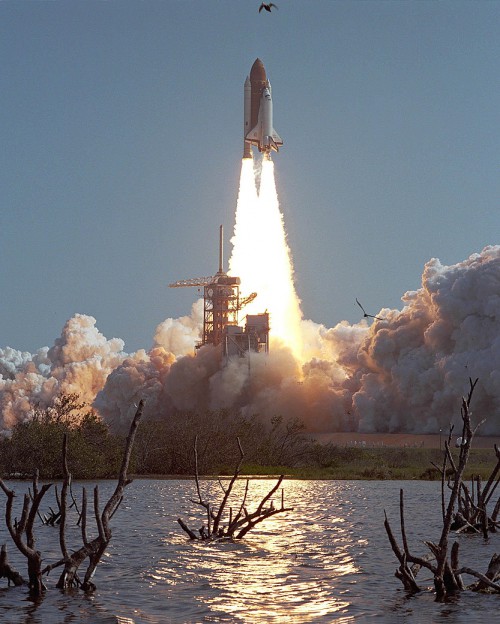
Fortunately, by Day Two, Hart had recovered sufficiently to take the lead in the LDEF deployment, successfully releasing it into space at 12:19:27 p.m. EDT, as Challenger travelled “upside down,” her open payload bay facing Earthward. To activate its many investigations, he firstly grappled the satellite by its so-called Experiment Initiation System fixture and then regrappled LDEF’s second grapple fixture to actually pick it up and deploy it. “The concern,” he remembered, “was that I was going to get it stuck, then we couldn’t close the payload bay doors and couldn’t come home. Crippen and I were trained on the RMS, with him watching and making sure everything was going well. First, I had to lift it out “straight” and then the arm did everything it was supposed to do. I put it back in the payload bay, just to make sure it would go back in before I lifted it out one more time to deploy it. We left it out on the arm and did some slow maneuvers to verify all the dynamics that the engineers wanted to understand about lifting heavy objects out of the Shuttle. Then, we very carefully deployed it. It wasn’t detectable at all when I released it; totally steady and we very carefully backed away and got some great photographs.” As LDEF drifted serenely into the inky blackness, Crippen and Scobee pulsed the shuttle’s thrusters to increase their distance from the satellite, confirming the separation rates using the Ku-band radar.
Pinky Nelson’s assignment to perform two EVAs, with van Hoften, in support of Solar Max had come at a restless time for himself. “This was the mission I wanted,” he said of 41C, “because it had EVAs. I remember meeting with Crippen shortly after that, in one of the little conference rooms at JSC, where he doled out the assignments and gave me the role of flying the MMU, which made my year! Here was a mission with four military pilots and they decided to let me fly the maneuvering unit. Training for that mission was really fun. It was really the most complicated spacewalk that had ever been conceived and a real precursor to the much more complicated work they’ve done on the Hubble Space Telescope. We worked hard to choreograph this repair and we had it down to a dance. We knew all the steps and who was where when, what tools were needed and how we moved things.”
Ox van Hoften was also elated by the assignment to Mission 41C. Years later, he speculated that Bruce McCandless, who had worked extensively on developing procedures for the Solar Max repair—and who performed the first untethered spacewalk with the MMU jet backpack in February 1984—was “unhappy” that he did not receive the assignment. “He went up and did the first flight,” van Hoften told the NASA oral historian, “but the real mission was not to just go out and fly the MMU around; it was to go out and fix the satellite.” At first, it seemed that van Hoften himself might not be making the EVAs. “About that time,” he explained, “they started running into money crunches and they said that they wanted to limit the space suit sizes, because originally the [space suit] that they made was meant for everybody. It was supposed to be from the 5th percentile female to the 99th percentile male. Well, I was the biggest guy they ever had, so at some point they decided they weren’t going to make extra-large suits anymore; they were just going to make small, medium and large, and those of us on the fringes weren’t going to get to do it.” It was a disappointment, but van Hoften still had a spot on what he described as “one of the premier missions.” At length, it was George Abbey who came to the rescue, insisting that van Hoften should do the EVAs with Nelson and ordering that a pair of extra-large suits should be manufactured.
For the next 14 months, the crew trained with an almost obsessive focus, totally immersed in the minutiae of the mission, and van Hoften is not alone in having lamented the effect that this imposed on families, particularly wives and children. “But the nice part,” he told the oral historian, “is that everyone is kind of in that boat, so there’s a whole community there to support everybody.” Every week, Nelson and van Hoften would don training versions of their suits and descend into the water tank at JSC to simulate removing equipment from Solar Max and installing new components … and their families were invited into the space centre to watch them at work. By the late spring of 1984, they were ready.
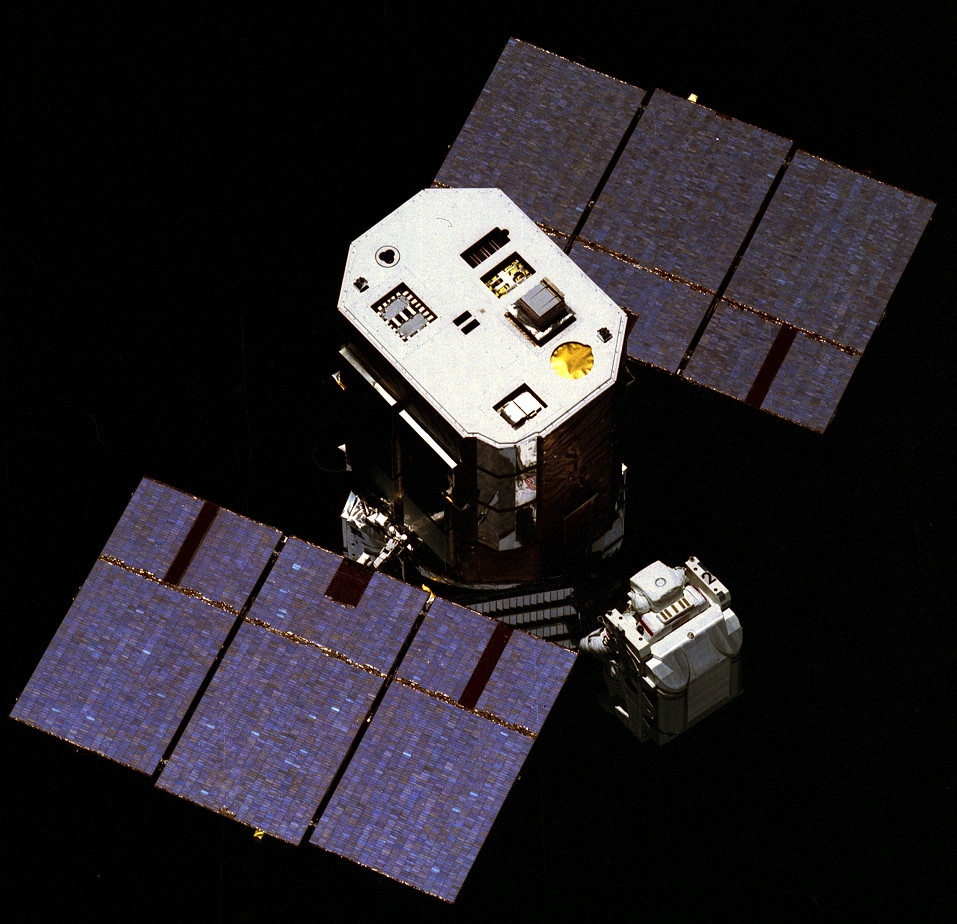
Not only had they nailed down the mission to perfection, but, in Bob Crippen’s case, even the pre-flight photographs turned into something of an art form. “I remember the day we posed for our crew picture,” recalled Terry Hart, “and all put our blue flight suits on and took maybe 20 pictures, trying to get the right expressions on our faces! Then, the tradition is that you bring them down to the astronaut office and ask the secretaries to pick which one is best. In one of them, one of us would be winking or our smile would be crooked or something like that. Every one of us had maybe a 50 percent “hit” rate on the pictures, having the right expression on our face. Then we looked at Crippen, who’d been in the public eye from STS-1 until this mission. Every photograph had the same expression on Bob Crippen’s face! He had it down pat. He knew exactly how to smile!”
As Nelson and van Hoften worked in the WET-F tank to perfect their orbital repair work, Crippen, Scobee, and Hart busied themselves with rendezvous procedures in the shuttle simulator. In Hart’s case, the RMS was another of his responsibilities. This had given trouble on its previous mission, when the wrist yaw joint failed. Although the cause of that failure was still unknown when 41C lifted off, the faulty arm (serial number 201) had been replaced by another (serial number 302) and verified on the ground.
Despite the importance of deploying LDEF, it was overshadowed by the repair of NASA’s malfunctioning Solar Max. In fact, virtually every shuttle flight since November 1982 had helped to lay the groundwork for the reusable spacecraft’s most ambitious mission so far. Extensive tests had been undertaken to validate the RMS, requiring it to manipulate larger and more bulky payloads, and three spacewalks had verified the performance of the suits, tools, and MMUs, together with the ability of astronauts to work effectively with them. In particular, Nelson and van Hoften paid a great deal of attention to the MMU assisted spacewalks undertaken on Challenger’s 41B mission. Crippen and Scobee, meanwhile, perfected the challenging rendezvous technique.
Their quarry—Solar Max—had launched atop a Thor-Delta rocket from Cape Canaveral Air Force Station, Fla., in February 1980, and was to spend a decade (essentially a full “solar cycle”) utilizing a battery of gamma ray, X-ray, ultraviolet, and other instruments to provide broad spectral coverage of the mechanisms responsible for causing solar flares. Ironically, only months after the MMU fabrication contract had been awarded to Martin Marietta, an unfortunate series of circumstances conspired to lead to the backpack’s first operational use. One of Solar Max’s instruments, a white light coronagraph and polarimeter, provided by the High Altitude Observatory of Boulder, Colo., worked satisfactorily from March to September 1980, then suffered an electronics failure which left it inoperative. Then, in December, a fuse blew in Solar Max’s attitude control system, causing it to “wobble” and rendering it incapable of pointing precisely toward the Sun.
All was not lost, however, because it had been designed as one of several Multi-Mission Modular Spacecraft (MMS), part of NASA’s vision to permit certain satellites to be serviced by the shuttle. Measuring 13.1 feet (four meters) long and fitting into a circular envelope some 7.5 feet (2.3 meters) in diameter, the 5,100-pound (2,315-kg) Solar Max had two sections: a payload module, laden with eight powerful solar instruments, and the MMS for attitude control, power, communications, and data handling functions. In view of its problems, Solar Max was placed into a slowly spinning “safe” mode, which it maintained for three years, and although three of its instruments returned valuable data, the primary mission was effectively suspended. Its Hard X-ray Imaging Spectrometer malfunctioned in June 1981 and was left useless. However, by keeping the spacecraft rotating at one degree per second and aiming its solar panels constantly in the direction of the Sun, NASA engineers kept it alive in a dormant state. In the meantime, as efforts got underway to build a replacement electronics box for the white light coronagraph and polarimeter, it was decided to incorporate changes into the new device to improve the instrument’s imaging resolution (which had begun to degrade as early as July 1980) and permit space-to-ground communications through the Tracking and Data Relay Satellite (TDRS) network.
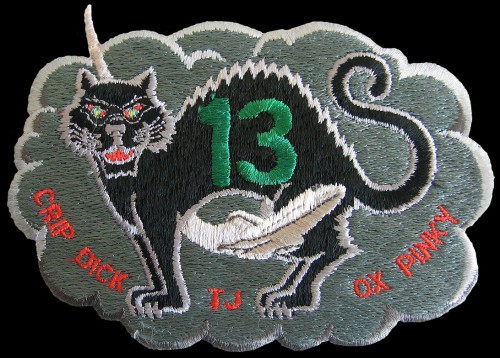
By the morning of 8 April 1984, after executing a series of thruster firings to set up an approach to their target, the 41C crew glimpsed Solar Max as a steadily brightening star. Crippen halted Challenger about 230 feet (70 meters) from the slowly spinning satellite, as Nelson and van Hoften completed donning their spacesuits. They entered the payload bay at 9:18 a.m. EDT. “There’s no comparison to getting into a suit and being outside,” said van Hoften. “It was just a whole new world. You open the hatch and you look out and … there goes Africa! It’s just so distracting that it took probably 20 minutes until you start saying ‘Hey, we’ve gotta get back on track here.’ But it was just amazing. We had done so much work in the water tank, but in zero gravity it’s really a lot different.” The plan was for Nelson, designated “EV1,” to fly the MMU out to the satellite and dock himself to its mid-section using a Trunnion Pin Attachment Device (TPAD).
Although Solar Max was not spinning too fast for Hart to grapple it with the RMS, “we felt it was more prudent to have Pinky fly over with a backpack, dock himself to the satellite, stabilize it and then I could grab it with the arm.” “Donning the MMU went very smoothly,” Nelson recalled, “just like training. Ox and I had practiced so intensely that it was more like a well-choreographed dance than anything else. Once I left the docking station in the payload bay, the MMU flew just like the simulator at Martin Marietta in Denver, where we trained. I had been very well briefed by Bruce McCandless about the few differences between the simulator and the real unit, such as “chatter” when accelerating, so I didn’t experience anything unexpected.”
Precisely on time, after a 10-minute solo flight, Nelson arrived in Solar Max’s vicinity and used the MMU’s thrusters to gently match its rotation. Unfortunately, when he moved in to mate his TPAD with the satellite, it did not clamp properly into place. “We didn’t know what was wrong,” explained Hart, “but, being mechanical engineers, we said ‘If a small hammer doesn’t work, use a bigger hammer!’ So Pinky went in twice as fast the next time and he hit again and bounced right off again.” A third try, which imparted yet more force, also failed. Had the TPAD been affected by the cold of orbital darkness? Its temperature after removal from the payload bay storage locker had not been maintained, but pre-flight tests and actual flight experience on Mission 41B determined that it was capable of withstanding at least a few hours in the frigid darkness.
Low temperatures did not seem to be a contributory factor. Furthermore, when Nelson pushed the TPAD against Solar Max, its trigger activated and released a pair of jaws in an attempt to grab onto its quarry. This ruled out a malfunction in the docking hardware. However, as the first EVA continued, the crew saw another problem brewing: Nelson’s efforts had jostled Solar Max out of its previously slow spin and Crippen asked him to grab a solar panel to steady it. The gyroscopic effect of this action worsened matters, and, with his MMU’s nitrogen supply running low, Nelson returned to Challenger. Instead of revolving gently, like a top, Solar Max was now tumbling unpredictably around all three axes.
Four tries by Hart to grapple it with the RMS proved fruitless, and Crippen opted to withdraw to a distance of about 100 miles (160 km) until a new strategy could be thrashed out. “The grappling pin I had to grab was underneath one of the large solar panels, so I could only get [the arm] there under certain conditions,” recalled Hart, “and it was very hard to predict how it was doing. I got close to it and I was maybe a foot away from getting it, but I’d reach some limit on the elbow or the wrist. I couldn’t go far enough or fast enough to get it. It may be a good thing, because the satellite was tumbling so much that if I had gotten it, it may have actually broken the arm! Crippen, rightfully, said ‘King’s X. Let’s go back.’ We got the Shuttle back in position in front of the satellite and then we stabilized everything. We had fuel left, but not enough to do what we were doing anymore.”
Privately, the astronauts were convinced that they had blown it and that the mission was a failure. “I could see myself spending the next six months in Washington,” Crippen told the NASA oral historian, “explaining why we didn’t grab that satellite!”
The second part of this article will appear tomorrow.
Want to keep up-to-date with all things space? Be sure to “Like” AmericaSpace on Facebook and follow us on Twitter: @AmericaSpace




Ben, great article. I arrived at JSC in mid 1983 but still got most of my info from newspapers plus a little confusing hallway gossip. Your articles provide new insights and clarifications. Many thanks!